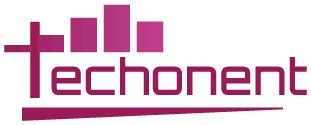
Are you wondering how to protect your business from financial and reputational risks? As the former CEO of a bank said, "An effective AML risk management program is essential in today's stringent regulatory environment."
An AML risk management program assists financially penalized institutions and other corporations in addressing risks associated with money laundering and other forms of terrorist financing.
It includes the identification of areas of operation with varying levels of risk, the implementation of suitable controls to monitor high-risk activities, and ongoing compliance with AML laws and regulations.
Such a well-designed program is very useful for businesses to improve defenses to financial crime while meeting both legal and regulatory requirements.
This article will explain what an AML risk management program is and how it can benefit your business.
Developing an Effective Program
An effective AML risk management procedure must utilize the right combination of people, processes, and technology. It encompasses designing adequate internal controls and outlining clear procedures on customer due diligence, ongoing transaction monitoring, record keeping, etc. Sufficient resources must be allocated to update high-risk areas appropriately through regular reviews.
Training employees on suspicious activities and clearly giving them their roles and responsibilities will improve stronger AML implementation. Based on recent data, countries must allocate at least 10% of their financial intelligence units' budgets to improve AML capabilities.
Bonus: To learn how you can create a custom AML risk management program for your business, contact one of our compliance experts today.
Performing Risk Assessments Regularly
Frequent risk assessments comprise any AML risk management program. They help the financial institution monitor changes in money laundering risks over time. In the 2023 FATF report, 90% of countries reported increased sophistication in techniques used in money laundering. This demonstrates how the methods keep evolving.
There is a continuous need for vigilance. Periodic risk assessment allows recalibration of risk categorization while enhancing the existing procedures and controls. Reevaluating the money laundering reporting officer's role, customer due diligence processes and other key policies will keep the program up-to-date against emerging threats.
Also Read: SWGoH WebStore
Implementing Risk-Based Controls
An effective AML is placed on a foundation of risk-based controls that have been implemented to monitor higher-risk customers and transactions, ensuring focused efforts in compliance. For this purpose, studies show that most financial institutions have increased their due diligence efforts over the last year.
Transactional limits can be used to screen large, complex transactions. Automated detection mechanisms for checking patterns analyze risk parameters and generate alerts when suspicious patterns of activity exist. Multiple controls, based on the firm's risk profile, must be incorporated into compliance frameworks.
Monitoring High-Risk Transactions
Financial institutions have AML risk management strategies that scrutinize those who are highly rated for risks. The cross checking of wire transfers is made against the sanction lists, and the transactions are compared against the customer's risk rating and expected activity levels.
In 2023, financial institutions filed more than 1.5 million SARs. This indicates an increasing interest in compliance and risk mitigation. Transactional inspection and reporting of suspicious activity will be required. Ongoing scrutiny is a core responsibility under AML provisions. Such can help risks actively keep them under control.
Ensuring Compliance with Regulations
An AML risk management program ensures that there is continual adherence to all the AML and counter terrorist financing compliance requirements across jurisdictions of operation. It facilitates the adoption of the standard 'know your customer' checks, standards for record-keeping, and all standards for reporting.
The controls and controls are checked through independent reviews of the program in order to ensure proper working and high-risk areas are suitably considered. More than 60% of the countries observe an increase in money laundering risks. This provides the regulators with the assurance that there is a solid defense in place against the impending money laundering threats while adhering to the statutory and regulatory requirements.
Also Read: 127.0.0.1:49342
Mitigating Reputational and Financial Risks
A strong risk management program of AML helps organizations easily avoid significant reputational and financial costs for detecting and preventing illicit fund flows. Global spending on anti-money laundering compliance is expected to cross $50 billion by 2025. This figure has given rise to the increasing importance of effective measures of AML. Being involved in a money laundering case can seriously damage a business's goodwill.
This might result in severe customer losses for a long time. In addition, non-compliance issues attract heavy regulatory punishment that can burn a very deep hole in one's pocket. An effective, well-designed program, along with robust customer due diligence and continuous transaction monitoring, would protect the organization from these risks.
Protecting Your Business from Risks
AML risk management program is an essential tool for adoption by financial institutions, among other entities. It saves them against potential sanctions while keeping their values and compliance obligations intact. Rigorous and regular vulnerability assessment coupled with focused mitigation activities are needed to guard against threats effectively.
According to an estimate from the FATF, over $2 trillion in laundry worldwide during a year requires this task to be done in the most efficient manner possible. An effective AML compliance program will safeguard an organization's reputation and long-term existence. To request specialized risk assessment or monitoring of higher-risk transactions, discuss your compliance requirements, and obtain a program, which we will specifically tailor to your needs.

